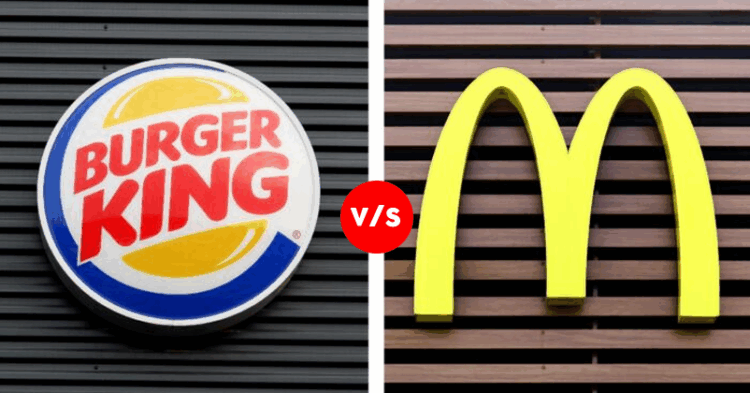The two big names in the fast-food industry, who have always had healthy competition, mutual respect and an honest battle amongst them: Burger King and McDonald’s are the go-to places for the best burgers in town.
In the case of India, McDonald’s has existed for a longer period of time as compared to Burger King, which only entered the Indian market five years ago.

So, what is the battle status in India?
Well, Burger King has seen a 64 percent annual revenue growth over the past three years as compared to McDonald’s 19 percent. However, it must also be noted that Burger King has seen this high growth due to the ‘beginning phase’ of its empire in India while McDonald’s is fighting the long-run battle against reaching a saturation point.

Burger King currently has 216 stores that are currently lesser than the 304 restaurants opened by Westlife owned McDonald’s in India. However, Burger King aims to increase its eating joints to 700 by 2025, which seems highly doable considering its high revenue growth.
Moreover, Westlife gets a license to operate McDonald’s in West and South India only with a 5 percent royalty payment that will go up to 8 percent in the coming few years. Yet, Burger King wins a pan-India license as Burger King India and a 5 percent royalty payment for now.
The last straw
The reason Burger King is winning it out in terms of revenues is because of its lower-cost strategy. The store size of a Burger King branch is mostly half or lesser than that of a standard McDonald’s branch.

So, a McDonald’s store is of about 3000 square feet on average and a Burger King India store is of 1500 square feet on average. This way, Burger King India played it smart with lower maintenance costs, lower salary costs and hence lower final product prices.

However, this is because Burger King is just starting out and hence has set up stores mostly in malls, hence the smaller store size. In the long run, it will need to set up independent stores which will increase its costs and only time will tell, the impact that would have on its customer base and profits.
















